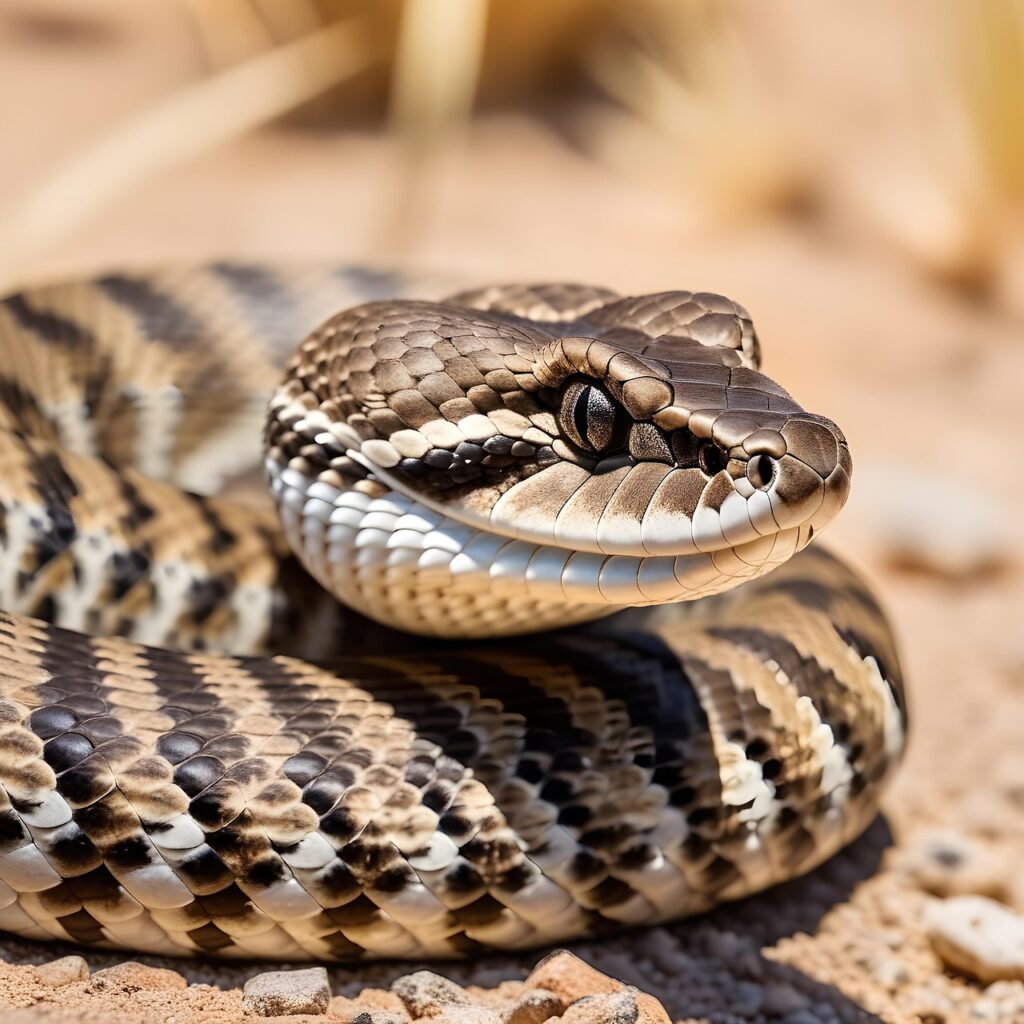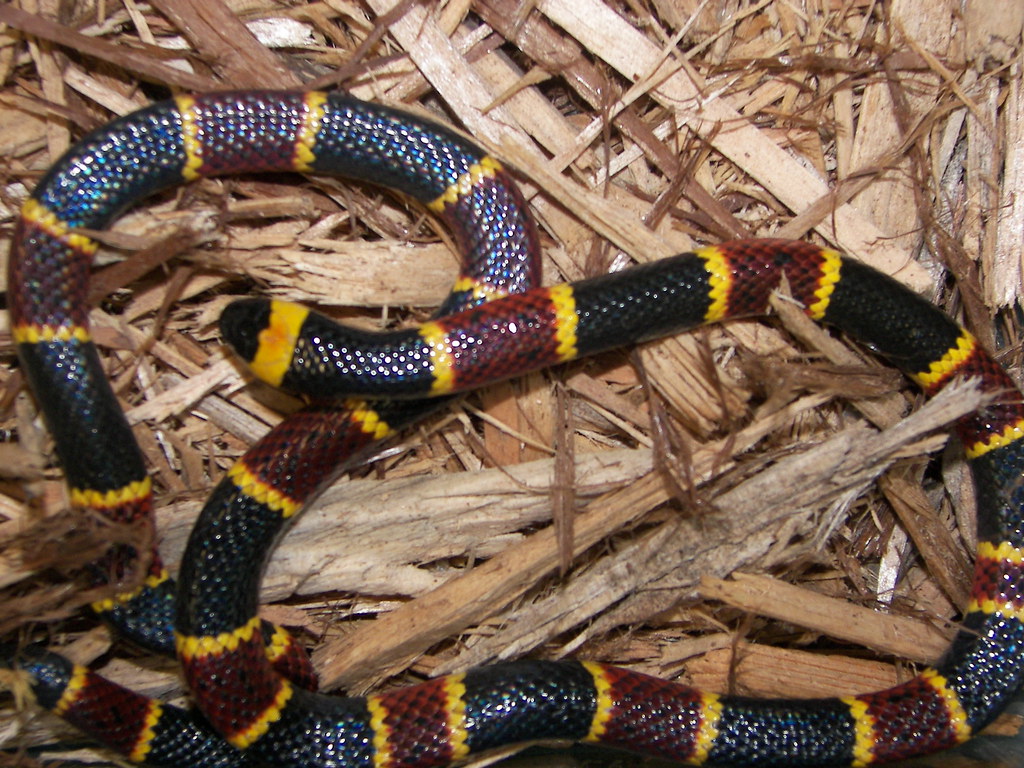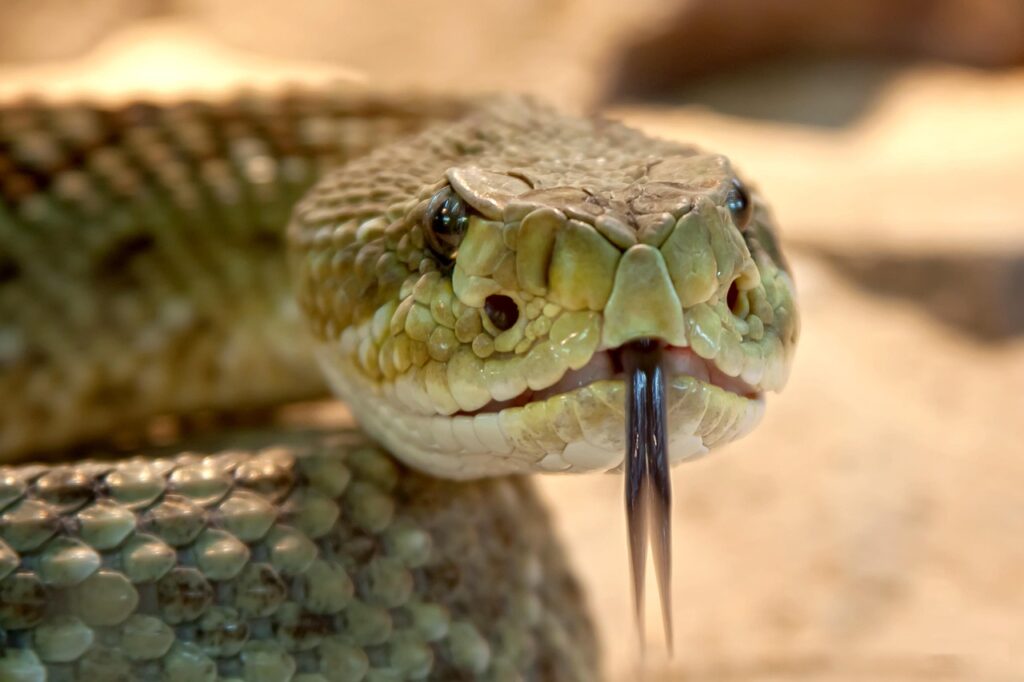Discovering wildlife in your backyard can be one of the joys of gardening and homeownership. From busy squirrels to colorful birds, these visitors often add a touch of nature to our personal green spaces. However, not all creatures are welcome guests, and sometimes, a slithering visitor brings significant concerns. While many common garden snakes are harmless and even beneficial, some species pose a significant danger to you, your family, and your pets.
Understanding how to identify potentially hazardous snakes is a crucial skill for any homeowner. This knowledge allows you to take proper precautions, make your yard less attractive to them, and know exactly what to do if you encounter one. It’s about empowering you with practical information to ensure your outdoor sanctuary remains safe and enjoyable for everyone in your household.
We’ve compiled an essential guide to 13 U.S. snakes you definitely don’t want to find in your garden. This first section will introduce seven of these formidable reptiles, providing detailed descriptions, unique traits, and cautionary advice drawn directly from expert insights. Being informed is your best defense, so let’s delve into understanding these fascinating yet dangerous creatures.

1. **Eastern Copperhead**The Eastern Copperhead is a pit viper primarily found across the eastern and central United States, instantly recognizable by its distinctive copper-colored head. Its body displays light brown or tan with dark brown, hourglass-shaped bands, offering superb camouflage among fallen leaves and forest debris. This natural blending makes them incredibly difficult to spot, leading to many accidental encounters.
The Eastern Copperhead is a pit viper primarily found across the eastern and central United States, instantly recognizable by its distinctive copper-colored head. Its body displays light brown or tan with dark brown, hourglass-shaped bands, offering superb camouflage among fallen leaves and forest debris. This natural blending makes them incredibly difficult to spot, leading to many accidental encounters.
Copperheads are responsible for more venomous snakebites in the U.S. than any other species. This is largely because they often freeze rather than flee when approached, leading people and pets to unknowingly step on them. While their venom is less potent than a rattlesnake’s, a bite causes intense pain and necessitates immediate medical care, though fatalities are rare for healthy adults. They frequently inhabit woodpiles, leaf litter, and overgrown areas.
For effective prevention, keep your lawn mowed short and promptly remove piles of leaves, wood, and other debris. Managing rodent populations, a primary food source for copperheads, also makes your yard less appealing. If a bite occurs, seeking prompt medical attention is vital, particularly for children and pets, to manage symptoms and ensure proper recovery.

2. **Cottonmouth (Water Moccasin)**Cottonmouths, also known as water moccasins, are semi-aquatic pit vipers native to the southeastern United States. These large, heavy-bodied snakes can reach up to four feet long, with coloration ranging from dark brown and olive green to solid black, making them hard to spot in muddy waters. Their most distinguishing feature is the bright white interior of their mouths, which they display in a defensive “gape” when threatened, giving them their name.
These snakes are known for their defensive nature; unlike many other snakes, they may stand their ground when approached. This behavior, combined with their potent cytotoxic venom that causes severe tissue damage, makes them particularly dangerous. They are typically found in or near water sources like ponds, lakes, rivers, and marshes, but can travel overland, especially after heavy rains.
To prevent encounters, be exceptionally cautious around water edges and wear thick boots and long pants during yard work near these areas. Secure pool areas and eliminate any standing water that might attract them. Maintaining a safe distance and understanding their habitat are key to avoiding this formidable reptile.

3. **Eastern Diamondback Rattlesnake**The Eastern Diamondback Rattlesnake is North America’s largest venomous snake, instantly identifiable by its distinctive diamond pattern. Found in the southeastern coastal plains of the U.S., these powerful predators inhabit pine flatwoods, sandhills, and coastal scrub. Their impressive size and formidable presence demand respect, though human encounters are relatively rare due to their reclusive nature.
When threatened, they issue a loud, aggressive rattle as a clear warning before striking. Their venom is a potent hemotoxin that destroys tissue and can be fatal without prompt medical attention. The danger they pose stems from their size, the volume of venom they can inject, and the destructive effects of that venom on tissue. They often seek cool, hidden spots like under decks, in rock gardens, or near woodpiles.
To deter them, seal gaps under sheds and decks, and consider installing snake-proof mesh fencing buried into the ground. Keeping your yard tidy to eliminate potential hiding spots is also vital. For pets in high-risk areas, discussing a rattlesnake vaccine with your veterinarian might offer an additional layer of protection.
Read more about: Beyond the Bite: Unmasking North America’s 12 Deadliest Animals and Essential Survival Strategies for Your Next Wilderness Adventure

4. **Western Diamondback Rattlesnake**Widely distributed across the southwestern United States, the Western Diamondback Rattlesnake is an iconic and highly dangerous pit viper. Similar to its eastern counterpart, it features distinct diamond-shaped patterns along its back, with coloration adapted to blend with arid desert sands or rocky terrains. This species is renowned for its aggressive rattling when threatened, a clear signal to keep your distance.
These rattlesnakes often venture into backyards in arid environments, particularly those near natural desert or grassland habitats. While bites are uncommon thanks to their warning signs, their potent venom poses significant risks, capable of causing severe pain, tissue damage, and life-threatening complications if untreated. Immediate medical attention is always crucial after a bite.
To mitigate encounter risks, homeowners in affected areas should maintain tidy yards, removing rock and debris piles that offer refuge from the intense daytime heat. Being vigilant when walking in sandy areas, especially at dusk or night, and learning to recognize their unique J-shaped tracks in the sand, can help you steer clear of dangerous situations.
Read more about: Beyond the Bite: Unmasking North America’s 12 Deadliest Animals and Essential Survival Strategies for Your Next Wilderness Adventure

5. **Timber Rattlesnake**The Timber Rattlesnake is a widespread pit viper, inhabiting diverse environments from moist lowlands to high-elevation forests across the eastern United States, including the Appalachian Mountains. They are distinguished by their dark banding or chevron-like patterns, offering excellent camouflage among wooded debris, making them quite elusive.
Known for their ability to climb trees, Timber Rattlesnakes can sometimes appear in unexpected elevated spots around homes. Though generally considered docile, they possess a powerful venomous bite. When threatened, they typically remain coiled, rattling as a clear warning before striking, indicating their desire for space.
Immediate medical attention is vital if bitten by a Timber Rattlesnake, as their venom causes severe pain and swelling. To minimize encounters, ensure your yard is clear of potential hiding spots like woodpiles, rock formations, and overgrown bushes. Understanding their behavior and maintaining a tidy outdoor space significantly reduces the risk of a close encounter.

6. **Prairie Rattlesnake**The Prairie Rattlesnake inhabits the open plains and grasslands of the central United States, posing a potential risk for homeowners in these areas. This species, known for its adaptive hunting strategies, can sometimes move into suburban environments, especially in search of food, making local awareness essential for residents.
Like other rattlesnakes, its most identifiable feature is its rattle, used to deter threats. While generally non-aggressive and preferring to avoid human contact, its potent venom demands extreme caution. Their natural camouflage, designed to blend into tall grasses and dry earth, means they are easily overlooked until you are dangerously close.
Their venom is a potent hemotoxin that can cause severe pain and tissue damage, requiring immediate medical attention. Bites most often occur when they are surprised or cornered, underscoring the need for vigilance when traversing tall grass or dense vegetation in their habitat.

7. **Eastern Coral Snake**Eastern Coral Snakes are instantly recognizable by their vibrant red, yellow, and black banding, though this striking pattern often leads to confusion with harmless mimic species. The crucial mnemonic “Red on yellow, kill a fellow; red on black, venom lack” helps distinguish them: on a coral snake, the red and yellow bands touch.
Found across the southern United States, these snakes possess a highly potent neurotoxic venom that severely impacts the nervous system, potentially leading to respiratory failure. Despite this danger, Eastern Coral Snakes are shy and reclusive, preferring to hide under logs, leaf litter, or burrowing into the soil rather than confront. Bites are rare, typically occurring when they are handled or accidentally stepped on due to mistaken identity.
Their small, fixed fangs require a prolonged bite to deliver venom effectively. However, the neurotoxic effects can be delayed for hours, making any suspected coral snake bite a critical medical emergency. Educating your family on proper identification is paramount. When moving outdoor debris like logs or rocks, use a tool to create a barrier, allowing you to check for hidden snakes from a safe distance and prevent accidental encounters.
Read more about: Beyond the Bite: Unmasking North America’s 12 Deadliest Animals and Essential Survival Strategies for Your Next Wilderness Adventure

8. **Invasive Pythons**While not venomous like many of the snakes we’ve discussed, invasive pythons, particularly the Burmese python found in Florida, present a unique and significant threat to homeowners and native ecosystems. These colossal constrictors can exceed 15 feet in length, possessing immense power that allows them to prey on large animals, including household pets like dogs, as well as deer and even alligators. Their alarming presence has led to a devastating impact on native wildlife populations, especially within the delicate balance of the Everglades, and their territory continues to expand.
The true danger from a python lies in its sheer size and formidable strength. A python of significant size can easily overpower an adult human, posing a lethal threat to both pets and children. These snakes are ambush predators, blending into their environment with camouflage patterns of tan, brown, and black blotches, making them incredibly difficult to spot in swampy or overgrown areas. They are often found near water sources or in dense underbrush, and disturbingly, sometimes even in suburban yards in affected regions.
For residents in areas impacted by these invasive giants, vigilance is paramount. Keeping a close watch on pets when they are outdoors is essential to prevent tragic encounters. Furthermore, if you spot one of these massive snakes, it is crucial not to attempt to approach or capture it yourself. Instead, immediately report any sightings to your state’s fish and wildlife agency, as they have the expertise and resources to handle such a powerful and dangerous animal safely.
Read more about: Florida: An In-Depth Profile of America’s Southeastern Peninsula

9. **Sidewinders**Stealthily navigating the scorching desert sands, the sidewinder is a distinctive species of rattlesnake perfectly adapted to its arid environment. Primarily found in the deserts of the southwestern United States and northwestern Mexico, it earns its name from its unusual and highly efficient S-shaped, sideways movement. This unique locomotion allows it to glide rapidly across the hot sand, minimizing contact with the searing surface. These are generally smaller rattlesnakes, typically remaining under three feet in length, and their sandy or pale brown coloration provides exceptional camouflage against their desert backdrop.
A key identifying feature that sets sidewinders apart is the raised, horn-like scale located above each eye, which helps protect them from sand and sun. Like all rattlesnakes, they are venomous, though their venom is considered less potent than that of some of their larger cousins. However, a bite from a sidewinder can still cause significant pain, noticeable swelling, and localized tissue damage, always necessitating prompt medical attention. Primarily nocturnal, these vipers hunt for lizards and rodents during the cooler hours of the night.
Given their size and natural camouflage, sidewinders can be incredibly hard to spot within sandy or rocky landscaping, particularly after dusk. To minimize the risk of an encounter, homeowners in desert regions should exercise caution when walking in sandy areas, especially during the evening or night. Learning to recognize their distinctive J-shaped tracks left in the sand can also help you steer clear of their hunting grounds. Additionally, removing rock and debris piles from your yard will eliminate potential hiding spots where they might seek refuge from the intense daytime heat.
Read more about: Ukraine’s Latest Defense: Missile-Armed Crop Duster Takes Flight Against Drones

10. **Mojave Rattlesnake**Often cited as one of the most venomous rattlesnakes in North America, the Mojave rattlesnake is a formidable resident of the arid desert regions of the southwestern U.S. What makes this species particularly dangerous is its unique venom, which possesses a potent combination of neurotoxic and hemotoxic properties. This dual action means its bite can not only cause severe tissue damage typical of hemotoxins but also profoundly impact the nervous system, making it exceptionally hazardous to humans.
Recognizing a Mojave rattlesnake can be challenging, but its distinct greenish hue and generally attentive, watchful behavior are often noted by experts. Unlike some rattlesnakes that might be more reclusive, Mojave rattlesnakes are commonly found in desert environments, often near cacti and other sparse vegetation or sandy areas. They are known to be more aggressive than many other rattlesnake species, particularly when they feel cornered or directly threatened, making accidental close encounters especially perilous.
Prompt medical treatment is absolutely essential following a bite from a Mojave rattlesnake. The neurotoxic components of its venom can lead to severe symptoms including difficulty breathing, while the hemotoxic effects can cause blood clotting issues and extensive tissue destruction. Therefore, immediate and specialized medical intervention is critical for survival and recovery. Homeowners in these desert regions must maintain a high level of awareness and respect their space to prevent dangerous interactions and ensure safety.
Read more about: Journey into the Abyss: Uncovering 15 of Earth’s Most Perilous Tourist Destinations for the Adventurous Traveler

11. **Pygmy Rattlesnake**Don’t let their name fool you; despite their diminutive size, pygmy rattlesnakes pack a surprisingly venomous punch. Found throughout the southeastern United States, these small vipers typically measure less than two feet long, making them significantly smaller than their larger rattlesnake relatives. Their small stature, combined with their excellent camouflage, means they are often overlooked or, even worse, mistaken for a non-venomous species, which can lead to dangerous mishandling.
Pygmy rattlesnakes prefer to inhabit wooded areas, often blending seamlessly among leaf litter and forest debris where they can ambush their prey. While they are fully capable of delivering a painful bite, they are generally less likely to be aggressive than larger rattlesnakes, often relying on their superb camouflage to avoid detection rather than confronting a perceived threat. However, any snake, regardless of its typical disposition, will strike if it feels threatened or is accidentally disturbed.
If a bite occurs from a pygmy rattlesnake, medical attention is necessary to address the swelling, pain, and other potential complications, even though their bites are rarely fatal to healthy adult humans. The key to safety lies in education: learning to identify their appearance, understanding their habitat, and teaching family members, especially children, about keeping a respectful distance. This knowledge can prevent unnecessary fear and ensure safer interactions with these fascinating, small predators.
Read more about: Florida Unveiled: Exploring the Sunshine State’s Deep History, Diverse Landscapes, and Enduring Allure
12. **Massasauga**The eastern massasauga rattlesnake is another smaller, elusive species that demands our attention, particularly for those residing in the Midwest. Unlike some of its desert-dwelling cousins, the massasauga is often found in wetland areas, including swamps, marshes, and damp grasslands. Its muted color patterns of brown, grey, and black blotches provide exceptional camouflage within these specific habitats, allowing it to remain largely unnoticed by both prey and potential threats.
Known for its tendency to avoid human interaction, the massasauga is generally reclusive. However, its venomous nature means that awareness is absolutely essential if it lives near your home. Encounters, though infrequent, can occur when these snakes are surprised or feel trapped, especially if their wetland habitats overlap with human activity like gardening or hiking. Like other rattlesnakes, they possess a rattle, though it is much smaller and produces a quieter buzz, which can be harder to hear.
Due to their preference for wetland environments, homeowners in affected regions should be particularly cautious around boggy areas, tall grasses, and near water sources in their yards. While their venom is not typically as potent as some larger rattlesnakes, a bite will still cause pain, swelling, and requires immediate medical attention. Maintaining a tidy yard and being vigilant in appropriate habitats are your best defenses against an unexpected meeting with this camouflaged, secretive viper.

13. **Western Coral Snake**Residing in the arid landscapes of Arizona and New Mexico, the Western Coral Snake shares the striking and cautionary coloration of its eastern relatives: vibrant bands of red, yellow, and black. These beautiful yet dangerous snakes are part of the Elapidae family, making them cousins to the infamous cobras, and possess a highly potent neurotoxic venom. Unlike vipers, coral snakes have small, fixed fangs and generally need to chew to deliver their venom effectively, though this does not diminish the danger.
Much like its eastern counterpart, the Western Coral Snake is incredibly secretive and reclusive, spending the vast majority of its life hidden beneath the sand, rocks, or other ground debris. This subterranean lifestyle means that human encounters are relatively rare, and bites typically occur only when these snakes are accidentally handled, stepped on, or disturbed in their hiding places. Their beauty, unfortunately, can sometimes lead to people attempting to pick them up, mistaking them for harmless mimics.
Given the neurotoxic nature of its venom, any suspected bite from a Western Coral Snake must be considered a critical medical emergency. The effects on the nervous system, potentially leading to respiratory failure, can be delayed for hours, making immediate intervention vital even if symptoms are not immediately apparent. Education on proper identification, remembering the “Red on yellow, kill a fellow” mnemonic, and respecting these creatures from a safe distance are paramount to avoiding dangerous interactions with this elusive desert dweller.
Next Steps for a Snake-Safe Yard
While you’re unlikely to encounter a mamba or bushmaster in your American garden, knowing how to handle local threats like rattlesnakes and copperheads—and the less common but equally dangerous species we’ve explored—is absolutely essential for peace of mind. Here are some actionable steps, straightforward and practical, to fortify your home and garden against unwanted slithering visitors:
First, make your yard as uninviting as possible for snakes. The best defense truly is prevention. Keep your grass mowed short, diligently trim dense bushes and shrubs, and promptly remove any piles of leaves, rocks, or wood – these are precisely the kinds of spots where snakes love to hide, seeking shelter and hunting grounds. Don’t forget to secure your compost pile and eliminate any standing water, which can attract prey and, consequently, their predators.
Then, consider controlling the food sources that might draw snakes in. Snakes are often attracted to yards because they offer an easy meal. By using humane and effective methods to control rodent and insect populations, you’ll naturally make your property far less appealing to these reptiles. Fewer mice and rats mean fewer reasons for a snake to call your yard home.
It’s also crucial to seal your home itself. Take the time to inspect your home’s foundation, paying close attention to porches, steps, and any other structures for cracks and holes, even small ones. Sealing these potential entry points is vital to prevent snakes from seeking shelter inside or underneath your house, especially during extreme weather.
And remember, when it comes to a confirmed dangerous snake, know when to call a professional. Never, under any circumstances, try to handle, trap, or kill a venomous snake yourself. If you confidently identify a dangerous snake in your yard, the safest course of action is to keep a secure distance, bring your pets and children indoors immediately, and then promptly call a professional wildlife removal service. These experts have the necessary training and specialized equipment to handle the situation safely and humanely.
Read more about: Beyond the Bite: Unmasking North America’s 12 Deadliest Animals and Essential Survival Strategies for Your Next Wilderness Adventure
Finally, and perhaps most importantly, educate yourself and your entire family. Teach everyone in your household, especially children, how to recognize the dangerous snakes common in your region. Instill in them the crucial lesson of respecting these creatures by always keeping their distance. By embracing these proactive measures, you’ll not only create a backyard that is beautiful and welcoming but also one that is genuinely safe and enjoyable for everyone in your family, fostering a more informed coexistence with our wild neighbors.




